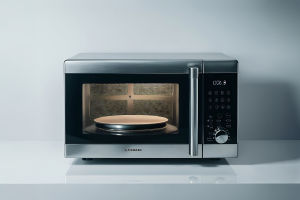When it comes to umbrellas, many people assume that a sunshade and a rain umbrella can be used interchangeably. However, this is not the case.
Understanding the differences between sunshades and rain umbrellas can help you make smarter choices and better protect yourself from both sun and rain.
The Design Purpose of Sunshades and Rain Umbrellas
Sunshades and rain umbrellas are designed for different purposes. Sunshades are made to protect against UV rays. Their fabric is specially treated to block UV light and keep your skin safe from the sun.
They are usually made from lightweight, breathable materials for comfort in hot weather. Rain umbrellas, on the other hand, are designed to keep you dry in the rain. Their fabric is more focused on waterproofing to prevent leaks. They are also built to be more durable and wind-resistant to withstand bad weather.
The Sun Protection Secret of Sunshades
Sunshades are effective at blocking UV rays thanks to their unique materials and design. They are often made from high-quality materials like polyester or black gel, which have good UV-blocking properties.
The inside of a sunshade usually has a UV-protective coating, such as a black gel layer, which absorbs and reflects UV rays to enhance protection. The color and size of a sunshade also affect its UV-blocking ability. Darker sunshades absorb more UV rays than lighter ones, and larger sunshades provide broader protection.
The Waterproof Features of Rain Umbrellas
The main function of a rain umbrella is to keep you dry in the rain, so its waterproofing is very important. Rain umbrellas are made from waterproof fabrics like nylon or polyester, which have been specially treated to stay dry in the rain. The structure of the umbrella ribs is also optimized to improve wind resistance and stability. When you use a rain umbrella in the rain, it helps to keep your body dry and comfortable.
Why Sunshades and Rain Umbrellas Should Not Be Used Interchangeably?
Although sunshades and rain umbrellas are both types of umbrellas, they have significant differences in design and function, so they should not be used interchangeably.
First, using a sunshade as a rain umbrella can damage its UV protection. The materials and coatings of a sunshade are designed for UV protection, but rainwater can wash away and erode these materials and coatings, reducing their effectiveness.
Over time, the UV protection of a sunshade can be severely damaged and fail to protect your skin from the sun. Second, using a rain umbrella as a sunshade can also affect its waterproofing. Although the fabric of a rain umbrella is waterproof, prolonged exposure to strong sunlight can cause the material to age, deform, or even break. When it rains heavily, the umbrella may leak and affect your experience. In addition, using the wrong type of umbrella in strong winds or prolonged sun exposure can also pose safety risks, such as a weak umbrella frame breaking or the fabric overheating and causing a fire.
How to Choose and Use Sunshades and Rain Umbrellas Correctly?
To avoid damaging sunshades and rain umbrellas and to ensure safety, it is recommended that you follow these principles when choosing and using umbrellas. First, choose according to your needs.
When buying sunshades and rain umbrellas, you should select based on your actual needs. If you need to spend a long time outdoors, it is recommended to choose a sunshade with a high UPF value, good quality material, dark color, and large surface area. If you need to deal with changeable weather, you should choose a rain umbrella with a sturdy structure and good waterproofing. Second, use them separately.
To avoid damaging each other and to ensure safety, it is recommended to use them separately. Use a sunshade on sunny days and a rain umbrella on rainy days to ensure the best performance and use effect of both. Finally, maintain them regularly. Both sunshades and rain umbrellas need regular maintenance to extend their service life.
When cleaning, use mild detergent and a soft cloth, and avoid scrubbing with hard objects or wringing out forcefully. At the same time, avoid exposing the umbrella to high temperatures or humid environments for a long time to prevent material aging and deformation.
Sunshades and rain umbrellas are both types of umbrellas, but they have significant differences in design and function. To maintain their best performance and use effect and to ensure your own safety, it is important to choose and use umbrellas wisely. Use a professional sunshade to protect your skin from the sun on hot summer days, and use a sturdy rain umbrella to deal with bad weather in the rain. Let's enjoy the summer sun and the nourishment of the rain together!


